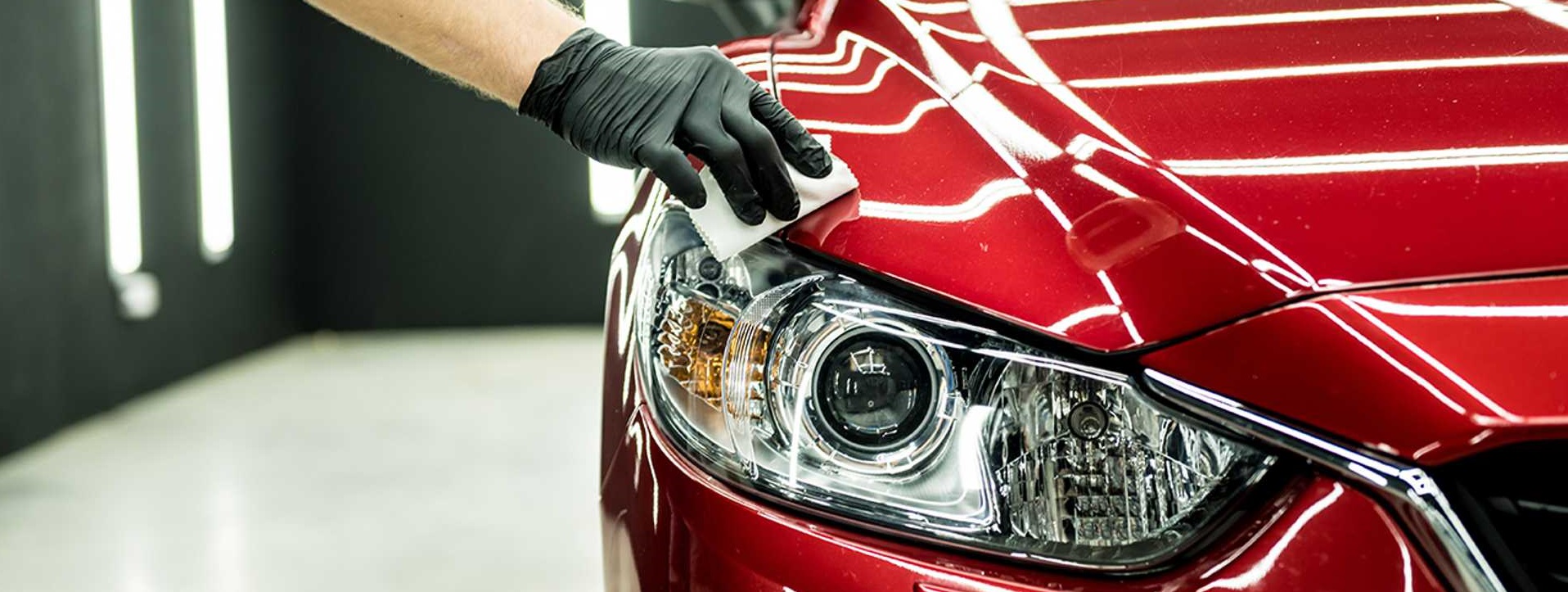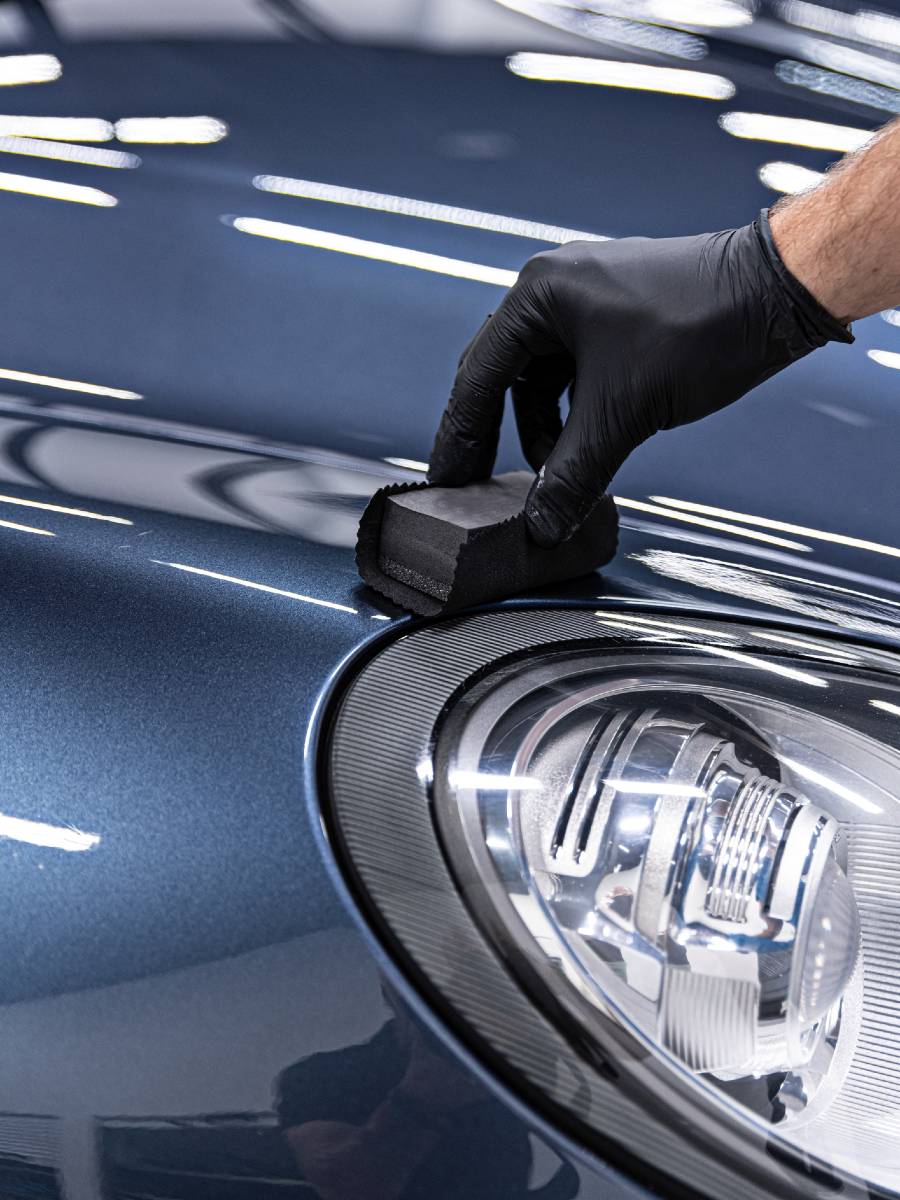Protect Your Car from the Elements with Ceramic Coating Technology
Ceramic Layer vs. Conventional Wax: Which Supplies Much Better Long-Term Protection?
The dispute in between ceramic coverings and traditional wax for car protection has actually gathered substantial interest among automobile enthusiasts and specialists alike. Ceramic coverings boast premium long life and resistance to ecological factors, yet the intricacy of their application raises concerns regarding accessibility and practicality.
Overview of Ceramic Covering
Ceramic covering has actually acquired considerable popularity amongst automotive lovers and detailers alike as a result of its sophisticated safety top qualities. This innovative technology is created to create a sturdy, hydrophobic guard over a car's paint surface area, considerably enhancing its resistance to ecological pollutants such as dirt, UV rays, and chemical spots. Unlike traditional wax, which gives a temporary layer of protection, ceramic finishes bond at a molecular level with the paint, offering lasting resilience-- often extending past two years with correct maintenance.
The application process includes meticulous prep work of the vehicle's surface area, consisting of cleaning and brightening to guarantee optimal bond. Once used, the coating treatments to create a durable layer that not just includes deepness and gloss to the paint yet also streamlines maintenance. With its hydrophobic properties, ceramic finishing enables water and dirt to slide off more easily, decreasing the frequency of laundries and decreasing the threat of swirl marks.
Additionally, ceramic coatings are readily available in different formulations, enabling individuals to choose products customized to their details needs and preferences. On the whole, ceramic coating stands for a considerable improvement in paint defense modern technology, delivering remarkable efficiency compared to standard alternatives.
Overview of Standard Wax
Typically considered a staple in automotive care, wax works as a popular option for those seeking a simple method to enhance and secure their car's paint - ceramic coating. Automotive wax usually comprises natural components, such as carnauba, or synthetic compounds, made to create a protective layer on the surface area of the paint. This layer not just improves the car's gloss and shine but additionally gives an obstacle against environmental pollutants
The application of wax is normally easy to use, making it available for both experts and DIY fanatics. As soon as used, wax calls for a treating period, after which it hardens to create a protective covering.
Nevertheless, while wax is reliable for boosting the aesthetic allure of a vehicle, it is necessary to keep in mind that the security it supplies might demand extra frequent reapplication compared to alternate products, such as ceramic coverings. In general, conventional wax stays a preferred alternative for those focusing on convenience of use and immediate aesthetic renovation.
Toughness and Longevity Comparison
While both ceramic coverings and conventional wax deal protective advantages for vehicle paint, their toughness and durability vary considerably. Typical wax, commonly made from all-natural carnauba or artificial polymers, typically offers a safety layer that lasts about 3 to 6 months. This reasonably short life-span requires routine reapplication to preserve optimum security.
In comparison, ceramic finishings are crafted from innovative nanotechnology, creating a covalent bond with the paint surface area. This leads to a durable, hydrophobic layer that can withstand for 2 to five years, depending on the item and environmental problems. The exceptional durability of ceramic coatings is credited to their chemical framework, which supplies enhanced resistance to scratches, UV rays, and oxidation.

Defense Against Ecological Aspects
Protecting an automobile's paint from ecological elements is essential for preserving its look and worth in time. Vehicles are constantly exposed to a range of components, including UV rays, bird droppings, tree sap, acid rain, and road grime, every one of which can compromise the stability of the paintwork.
Ceramic layers give a durable protection against these ecological aggressors. Unlike conventional wax, which can weaken rapidly under UV exposure, ceramic finishes form a resilient, hydrophobic layer that stands up to the damaging results of sunlight and ecological toxins. This advanced technology develops a chemical bond with the vehicle's surface area, providing premium protection that lasts for several years, also in harsh problems.
Conventional wax, while less complicated to use, typically requires frequent reapplication and supplies minimal resistance to pollutants and UV rays. With time, it can damage down, leaving the paint susceptible to scratches and oxidation. In contrast, ceramic finishings keep their protective top qualities much longer, dramatically reducing the threat of paint damage and guaranteeing that the car maintains its aesthetic allure. Consequently, ceramic finishings are significantly recognized as the exceptional choice for long-term protection against ecological factors.
Application and Upkeep Distinctions
The methods of application and succeeding maintenance for ceramic finishings and conventional wax differ significantly, affecting the total customer experience and effectiveness of each item. Ceramic why not look here coatings need a more elaborate application procedure, usually entailing surface area prep work that includes washing, decontaminating, and brightening the car. When the surface area wikipedia reference prepares, the ceramic finishing is used in a regulated setting, frequently needing professional experience to guarantee correct treating and bonding to the paint.

While both products boost car look, the longer-lasting defense provided by ceramic finishes may warrant their preliminary investment, despite the more requiring application procedure. Alternatively, standard wax stays a popular choice for those looking for a less complex, albeit short-term, option.

Conclusion
Finally, ceramic finishes demonstrate substantial benefits over traditional wax in regards to durability and environmental security. With a lifespan extending two to 5 years and exceptional resistance to UV rays, dirt, and chemical discolorations, ceramic coverings web supply an extra efficient option for long-lasting automobile upkeep. The application procedure might need professional knowledge, the resulting expense financial savings and decreased frequency of reapplication underscore the value of ceramic coatings for those looking for optimal automobile protection.
The debate in between ceramic finishes and conventional wax for car protection has amassed substantial focus amongst automotive fanatics and specialists alike. Unlike traditional wax, which gives a short-lived layer of security, ceramic coatings bond at a molecular level with the paint, providing long-lasting toughness-- often extending past 2 years with proper upkeep.
While both ceramic coatings and typical wax deal safety advantages for vehicle paint, their durability and longevity vary significantly. For auto fanatics looking for long-lasting security, ceramic coverings provide an engaging advantage over traditional wax items.
In final thought, ceramic finishings demonstrate substantial advantages over conventional wax in terms of resilience and ecological protection.